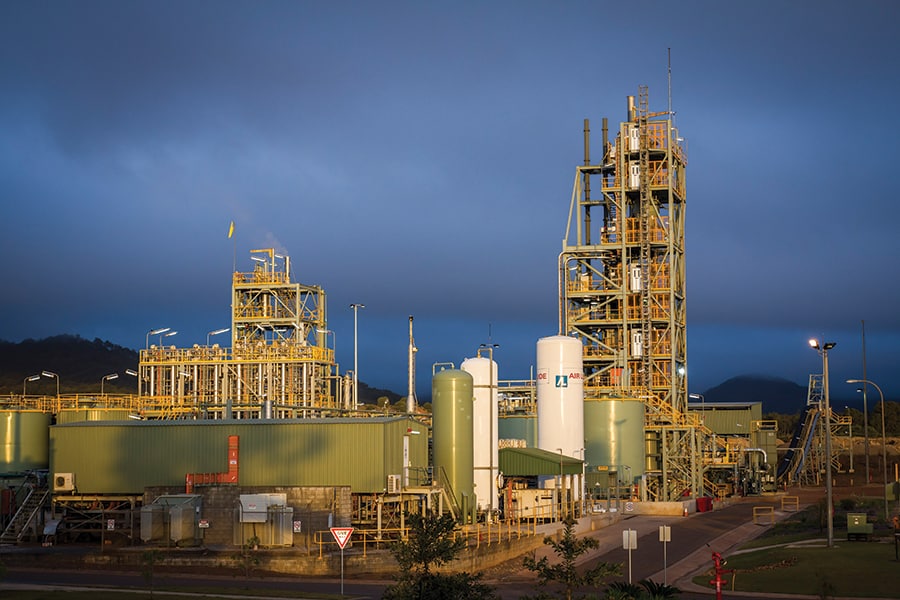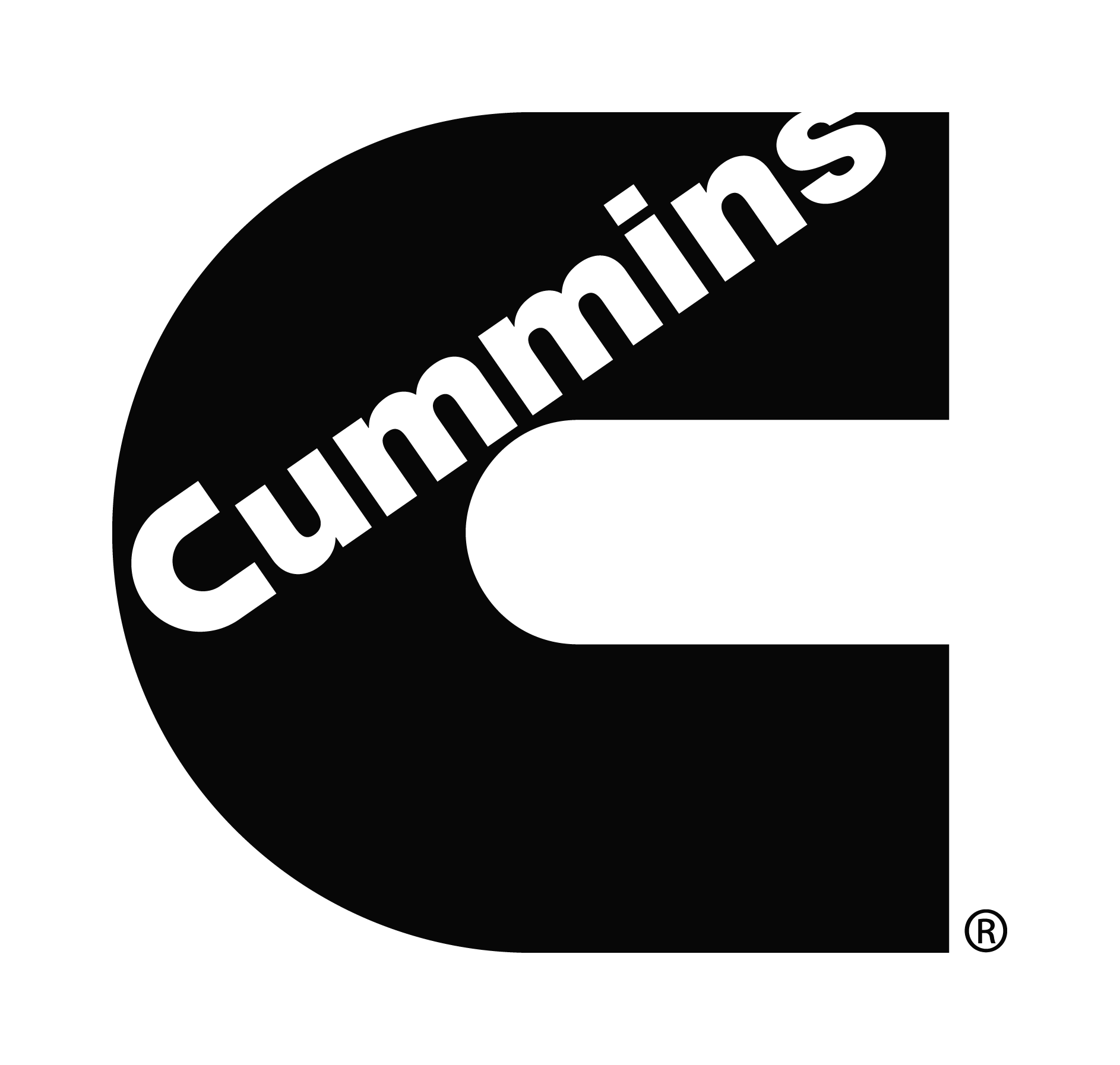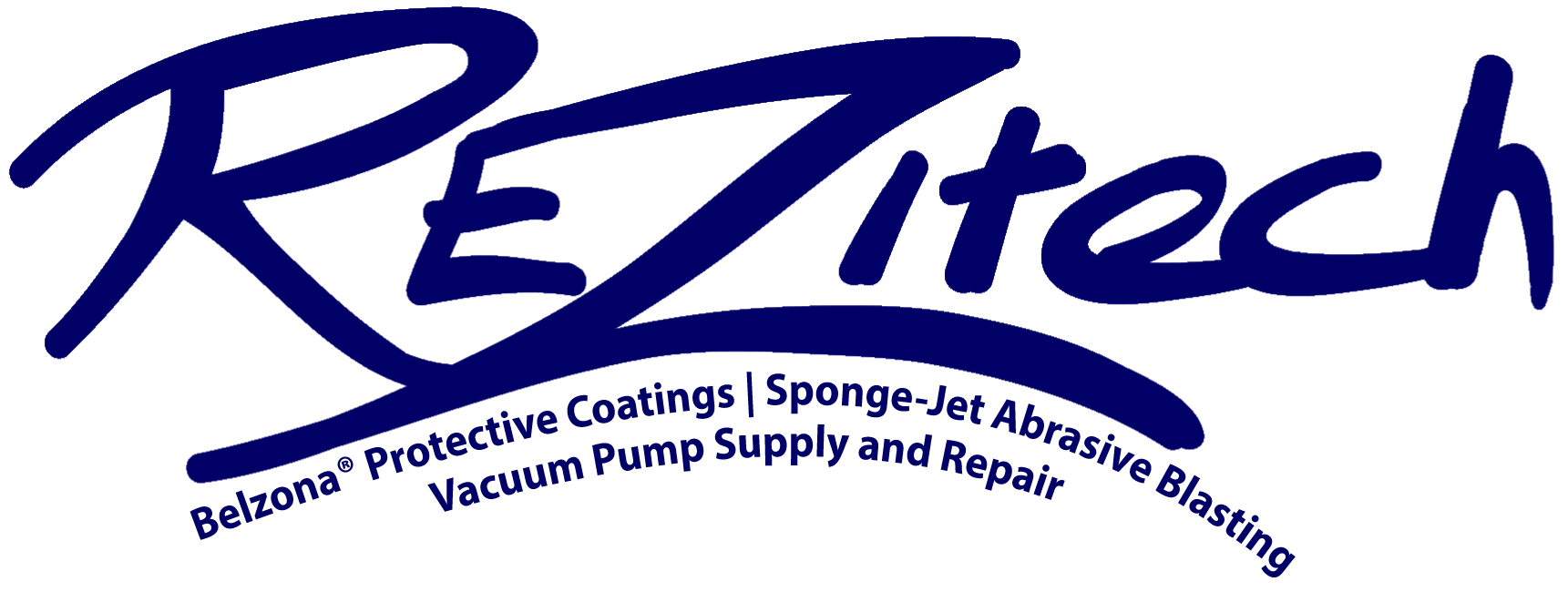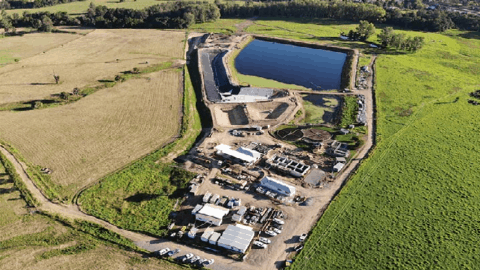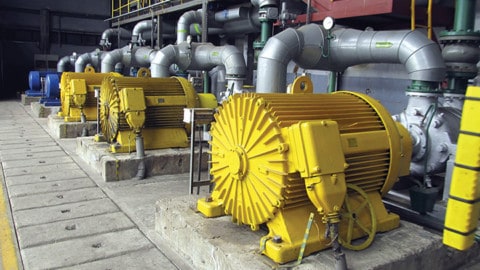In this ongoing series of interviews, we talk in depth with the end users of pumps across a range of industries and applications. Here we speak to Doug Bignell, who recently completed a role as a Senior Maintenance and Reliability Engineer at Queensland Energy Resources (QER). In his role at QER, Doug was involved in the operation of the Paraho II technology demonstration plant in Queensland, which was established to highlight the potential to tap into the Stuart oil shale deposit – a rich potential future fuel source.
Doug’s career began with a role as a maintenance fitter working in heavy industry and maintaining and replacing pumps of various types and sizes. His pump experience started in a small workshop in Brisbane, Brecknell Engineering, which sold and serviced progressive cavity pumps, and this eventually led Doug to Queensland Alumina Limited’s (QAL) alumina refinery in Gladstone, working on large scale centrifugal pumps.
“While at QAL, I was given the opportunity to work with reliability engineers solving pumping issues. This caused me to take a look at my aspirations and take on the challenge of completing an engineering degree to work as a reliability engineer,” said Doug.
From QAL Doug went to Orica Yarwun as a plant engineer, a role that was similar to his role with QER, except for the R&D part. From Orica, Doug made his way to QER.
In Doug’s role at QER, he played an important part in the company’s current focus on developing the technology to turn Queensland’s vast oil shale reserves into heavy transport fuels. QER’s plant in Gladstone, Queensland, is a small R&D plant testing the technology and using that information to upscale to a full commercial plant.
“Our main output is data,” said Doug. “My role at QER has me responsible for the maintenance and modification of the plant. I am responsible for setting up the maintenance strategy for the plant, for ensuring all day-to-day and breakdown maintenance activities are carried out, reliability improvements are put in place and the plant is modified to comply with R&D changes as dictated by our project team.
“Over the last 25 years I have worked on and played with a variety of pumps, from positive displacement, to centrifugal, to vacuum,” said Doug. “These included many brands and many sizes with various media, from water, to slurry, to concrete, to acids and alkalis to oil-based products. I have also had the opportunity to work on various drive systems including diesel motors, electric motors, air motors, magnetic drives and steam turbines.
“One of the biggest changes I have seen in the industry would be the acceptance of mechanical seals over packed glands. When I started out, mechanical seals were reserved for pumps in duties around flammable or hazardous products. Now almost all pumps are mechanically sealed.”
Can you explain a bit about the procurement process for pumping equipment?
Pump procurement at QER generally commences with a process engineer specifying a duty point for the new/replacement/upgraded pump. It is the process engineer’s responsibility to supply a data sheet, obtaining the information from other engineering disciplines to correctly populate the information. He will talk to the mechanical engineer to decide on the pump’s materials of construction, footprint limitations and noise limitation, and to the electrical engineer for drive requirements and control philosophy.
Once the data sheet is completed and sanity checked, it goes out to vendors as part of the request for quotation (RFQ) documentation. The RFQ document stipulates what information is required in the quotation packages from the vendors to assist us in selecting the right pump for the application (i.e. pump curve, availability, price, recommended spares, general arrangement drawings, etc.).
When the quotation packages arrive, they are initially reviewed by each of the engineering disciplines, who compare the packages against the data sheet and short-list the pumps. The final pump selection generally happens at a group forum between the engineering and operations groups, as both operability and maintainability play a part in the selection criteria. It is very similar to the recruitment process.
What testing do you conduct for pumping equipment?
The testing requirements are dictated by situation. If it is a new pumping system, then we typically go for factory acceptance testing (FAT). We generally witness these tests. Once on site we will quantify the FAT with a site acceptance test (SAT). This allows us to test the pump at operating conditions, including temperature and pressure. As most of our pumps are variable speed, we will usually put the pump through various conditions to allow us to fully validate the pump. For replacement and upgraded pumps, we only carry out SATs.
The FAT and SAT results are reviewed by the process engineer and when there is an issue we normally carry out a risk assessment. From the risk assessment, actions are generated and prioritised. Priority 1 (P1) items will be addressed straight away, with P2 and P3 items being addressed within certain time periods. FAT issues are corrected before the plant has left the factory.
As we are an R&D plant we need to ensure that all information we collect is accurate to allow for correct data to flow into the engineering and design of a commercial sized plant.
What are the best ways to ensure good communication and get the best results between client, consultant and supplier?
The best way to ensure good communication/support is to fully understand what you want and ensure everyone else in the process understands as well. Give the supplier all the information they need and they can give you an accurate product choice. The supplier, in turn, supplies the customer with all the information they require to allow them to make an informed decision. I have seen it in the past, where only part of the information is supplied, a choice is offered, a decision is made, and it has turned out to be a bad one. Or, the customer is not given all the details he needs to correctly install/operate the pump and it does not perform as expected. They then get the rest of the puzzle pieces and voila, it works. This usually leaves the customer with a bad taste in their mouth and a reservation about using that vendor again.
What are the most important factors in pump selection?
At QER the most important factors are: suitability of the pump, cost, availability and the cost and availability of parts.
How important is energy efficiency and how does it factor into decisions?
Energy efficiency plays a large part in our pump selection. Due to the nature of our plant, we have a tight operating budget and power costs make up a large portion of that budget. However, as with other factors in plant selection, it is only one of the factors that are reviewed. On the commercial design, energy efficiency plays a large part in equipment selection.
How important are the maintenance and repair schedule and costs in project planning?
For our R&D plant with its finite operating life, we viewed life-cycle costing as part of the selection criteria. However, it was only a minor factor with minor weighting in the decision making process.
For our commercial design, the whole-of-life cost of a plant is a major factor. As we are going out seeking investors for that project, it is critical, in the engineering package of the commercial plant, that we have reasonably accurate forecasts of operation and maintenance costs to be able to give accurate estimates for return on investment. For this we use PAS55 and ISO55000 standards and a couple of different modelling software packages that take all the life cycle, operating and maintenance information from the vendor and real-world experience to accurately predict this.
Can you explain a bit about your on-site servicing and routine maintenance?
QER’s demonstration plant has had two primary purposes – to highlight the operating performance of the Paraho technology and to provide data for the future development of a commercial facility. As a result, the plant is heavily instrumented and monitored. We know fairly quickly when a pump is underperforming and plans are put in place to correct this issue. This usually results in the offending pump being removed from service, and a replacement installed. The faulty pump is usually cleaned and overhauled and returned to the warehouse.
For general maintenance activities such as lubrication, vibration analysis and oil analysis, we rely on our computerised maintenance management system (CMMS) to generate PMs to ensure this work is carried out at regular intervals.
Can you explain your view and relationships with the Australian pump industry?
I see the Australian pump industry as a vibrant, burgeoning industry, struggling against strong internationals. Some of the plants I have worked on have specialist pump systems that seem to be only available from Europe and the US. This leads to slow information exchange, long lead time for parts and generally high prices. I now see this changing, whether it is due to large companies buying into our market to get a local footprint, or our big players buying overseas to get specialist technology. This is a good thing. The more we can source locally, the better for Australian industry.
I tend to see my pump and seal suppliers regularly and generally get great follow-up service. Being based in an industrial town, there tends to be local representation for most brands and the remainder travel to town often.
The one issue I do have is the trend for vendors and customers to carry minimal stock. This is not just restricted to the pump industry. I understand that it is a huge burden, financially, to have extensive stock holdings, and we all know how hard it is to convince the bean counters of the need to carry stock. However, it is the one thing I would like to see improved.
What are the most important issues in pumps today?
For me the most important issue in pumps today is not hardware related but more about maintaining experienced staff. This is from my side as well as the vendors’ side. The majority of reps that I see are middle-aged, with the younger reps definitely in the minority. It may just be a local issue. With big money to be made in heavy industry, mines or construction, there is little chance for the service industry to attract young blood. The same goes for maintenance staff. With so much competition for labour in Central Queensland, especially in construction, it is hard to attract and retain quality staff, as small industry cannot compete with the salaries that are available to even non-skilled labour.
Where do you see the pump industry going in the future?
My hope is that the Australian pump industry continues to expand into the global market. I see this as a major improvement for all concerned in the industry, including the end users. I see it creating a more competitive and diverse market where technical systems that could only be brought in from overseas are able to be supplied locally, with local stock of spare parts and almost instant feedback for any technical issues that arise.
The internet is playing a large part in this. More and more vendors have an online presence, allowing instant access to manuals, videos and other media, enabling the end user to self-help more and more, and allowing reps to supply instantaneous information. This can only be a good thing.


